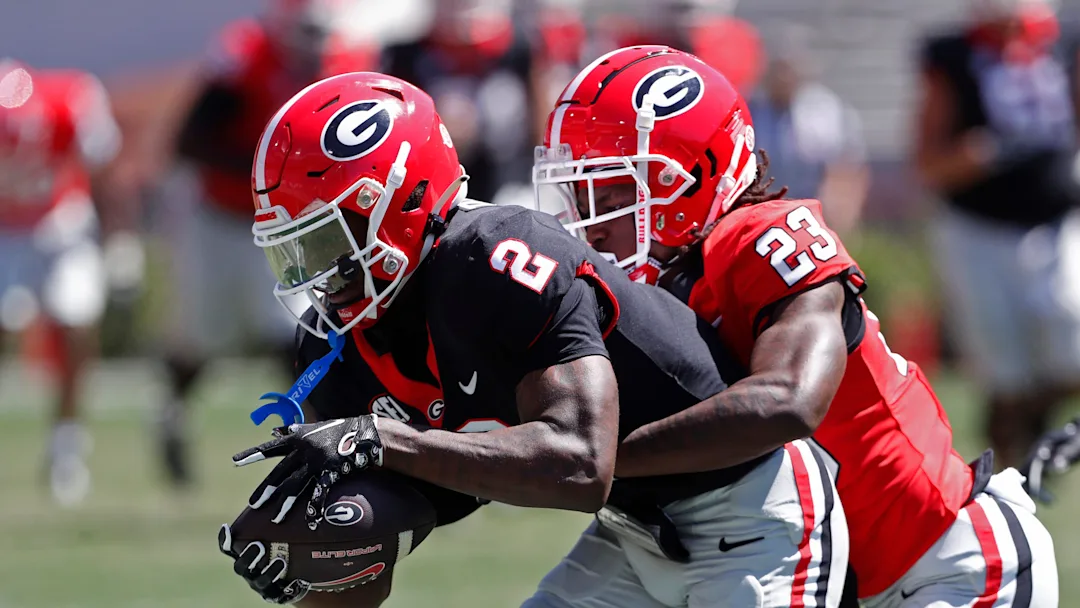The Georgia Bulldogs are gearing up for their annual spring football scrimmage, known as “G-Day,” and the weather forecast for the event is taking center stage in preparation. As one of the most anticipated spring football events in college sports, G-Day draws thousands of fans to the University of Georgia’s historic Sanford Stadium, providing an early glimpse at the team’s upcoming season. The atmosphere at G-Day is always electric, with fans eager to see how new players, strategies, and fresh talent will perform. However, just as the excitement of the game itself is crucial, the weather conditions play a significant role in shaping the experience for both players and fans alike.
With the Southeastern United States known for its unpredictable weather, Georgia’s spring season can be particularly tricky when it comes to planning outdoor events. The state of Georgia has a varied climate, ranging from the temperate coastal areas to the more humid, inland regions. This means that, while spring temperatures are often mild, conditions can quickly change. That is why, every year, fans and organizers alike keep a close eye on weather forecasts as G-Day approaches, as it can make or break the event. Whether it’s scorching heat, sudden thunderstorms, or the occasional cool breeze, weather conditions are something everyone involved must be prepared for.
For those planning to attend G-Day, weather can influence a number of factors. For starters, the temperature on game day can impact the comfort levels of the fans in the stands. In Georgia, April can present a mix of warm and cool temperatures, especially later in the afternoon when the sun is high in the sky. Fans should prepare for the possibility of a warm day, with temperatures potentially reaching the upper 70s or low 80s, especially if the game is being held later in the day. When the sun is shining, it can be sweltering in the stands, making hydration a key component of enjoying the event. On the flip side, if the forecast indicates cooler temperatures, fans may need to layer their clothing, as the breeze can make it feel much colder than expected. Of course, for those who may not want to risk the possibility of getting too hot or too cold, it’s always best to check the weather the morning of the event and dress in layers that can be adjusted as necessary.
In addition to the comfort of the fans, the weather can have a major impact on the players’ performance on the field. Football players are accustomed to playing in a variety of conditions, but extreme heat or cold, heavy rain, or strong winds can still affect their ability to perform. One of the biggest challenges in spring football is the inconsistency of the weather. Teams may have been practicing in indoor facilities or under more controlled conditions, and being outdoors for G-Day could present a whole new set of challenges. For instance, if rain is expected, the playing surface at Sanford Stadium, which is a natural grass field, could become slippery, potentially leading to increased injuries or altering the way players approach certain plays. Rain can also dampen the excitement of a scrimmage, as fans may be reluctant to attend or may be forced to leave early due to the wet conditions.
Thunderstorms, which are not uncommon in Georgia during the spring months, could cause significant delays or even lead to the cancellation of the event. The safety of both the players and the fans would be a priority in such a situation, as lightning poses a serious risk to outdoor events. For fans, sudden storms can also present an inconvenience, as tailgating plans may have to be adjusted, and the game itself may be delayed or moved indoors, potentially diminishing the experience. However, it’s worth noting that the University of Georgia has a history of being well-prepared for such situations, with advanced weather tracking and safety protocols in place to ensure the well-being of everyone attending.
Wind is another weather variable that can influence the outcome of G-Day. While not as drastic as thunderstorms or extreme heat, strong winds can affect the passing game, as quarterbacks may struggle to make accurate throws and wide receivers may have a harder time judging catches. This could make G-Day particularly interesting from a strategic standpoint, as coaches might adapt their play calling to account for the wind, testing the depth and flexibility of their offensive and defensive strategies. On a day with high winds, fans may also notice how the flags and banners flutter in the breeze, adding an element of visual drama to the event.
For those planning to travel to G-Day, the weather can also play a part in their travel experience. If the forecast predicts heavy rain or thunderstorms, the roads could become slick, leading to slower travel times and possibly dangerous driving conditions. Those attending from nearby states should check local forecasts to determine the best time to leave and whether they should adjust their travel routes. Fortunately, Georgia’s major highways are well-maintained, and traffic management around the University of Georgia on G-Day is typically efficient, but inclement weather can still cause delays or traffic jams.
When weather conditions are ideal, G-Day is an experience that feels larger than life. A cool breeze can make for a pleasant spring afternoon, with the sun shining just enough to provide warmth without becoming unbearable. Fans of all ages fill the stadium, wearing red and black, and the atmosphere is one of community and excitement. For those who have been waiting all year for the start of the season, G-Day is the perfect opportunity to start making memories of the upcoming campaign.
However, when the weather takes a turn for the worse, it can significantly alter the dynamics of the event. Fans huddle under umbrellas, tailgates are packed up early, and the stadium may seem emptier than expected. Coaches and players are forced to adjust their expectations, which can sometimes result in a scrimmage that feels a bit anticlimactic. Despite the challenges posed by less-than-ideal weather, the Georgia Bulldogs and their fans are resilient. Whether it’s a sunny day, a gusty wind, or an unexpected rain shower, the show must go on, and the determination of the Georgia faithful to support their team remains unwavering.
In conclusion, the weather for G-Day is an important factor to keep an eye on as the event approaches. While the forecast may change, it’s clear that the weather plays a significant role in shaping the overall experience for both players and fans. Whether it’s the sweltering heat of a sunny day or the unpredictability of a sudden spring thunderstorm, the weather will influence how the game is played and how the fans enjoy the day. For the Georgia Bulldogs, G-Day serves as a moment to showcase their talent and get ready for the fall season, but it also serves as a reminder of how weather can shape even the most well-planned events. As fans and players alike keep their fingers crossed for the perfect spring day, one thing is certain: no matter the weather, G-Day is a celebration of Georgia football, and that’s something worth looking forward to, rain or shine.



